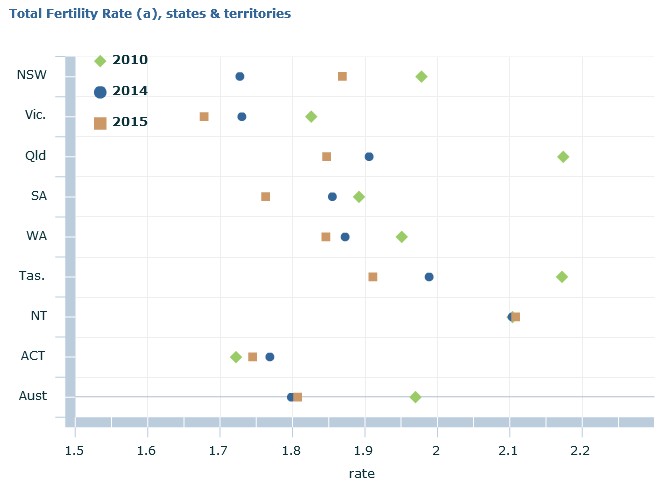The Australian Bureau of Statistics (ABS) has released its Births 2015 survey, which recorded a 1.9% rise in births to 305,377 in 2015, with the fertility rate also rising marginally to 1.81, albeit it remains well below replacement:
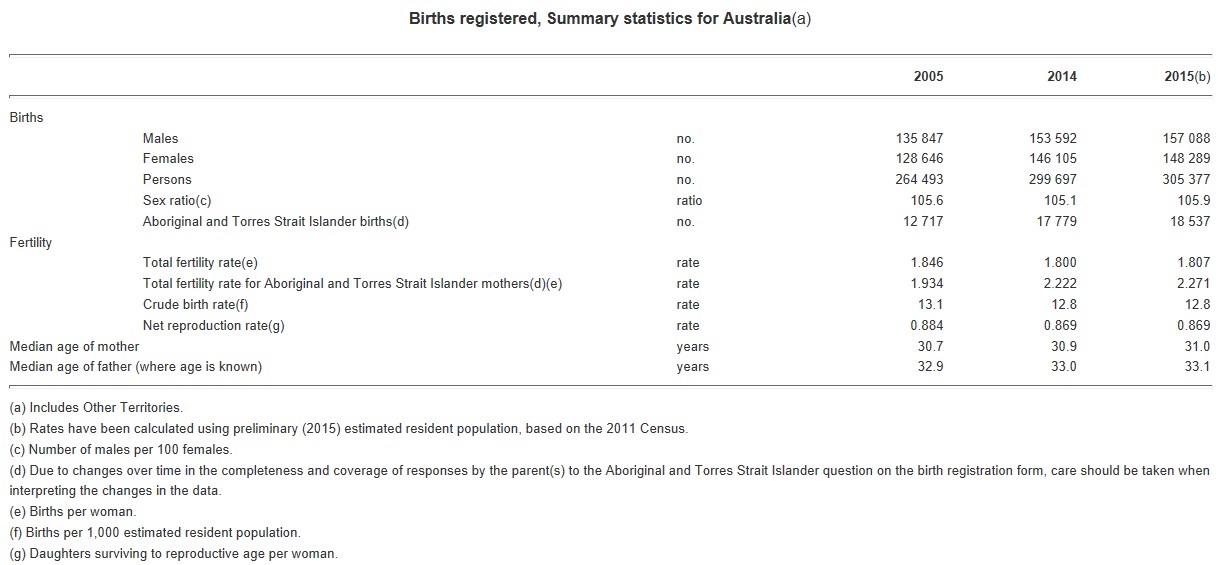
The next chart plots births across Australia, which were just below 2012’s record high:
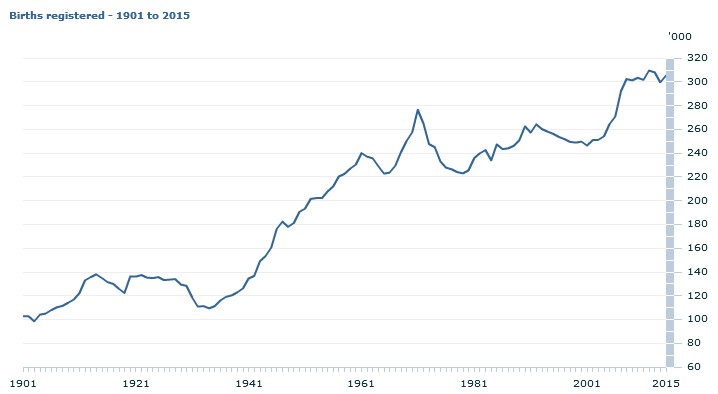
However, all states except NSW recorded falling births in 2015:

The median age of both mothers (31.0) and fathers (33.1) at birth hit record a record high in 2015:
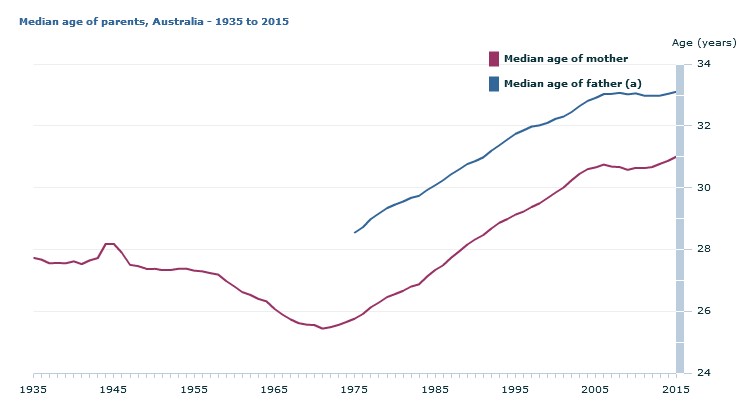
In 2015, Australia’s total fertility rate (TFR) was 1.81 babies per woman. Since 1976, the TFR for Australia has been below replacement level. This means the average number of babies born to a woman throughout her reproductive lifetime (the TFR) has been insufficient to replace herself and her partner. The TFR required for replacement is currently considered to be around 2.1 babies per woman. The TFR reached a low of 1.74 babies per woman in 2001 before increasing to a thirty-year high of 2.02 babies per woman in 2008:
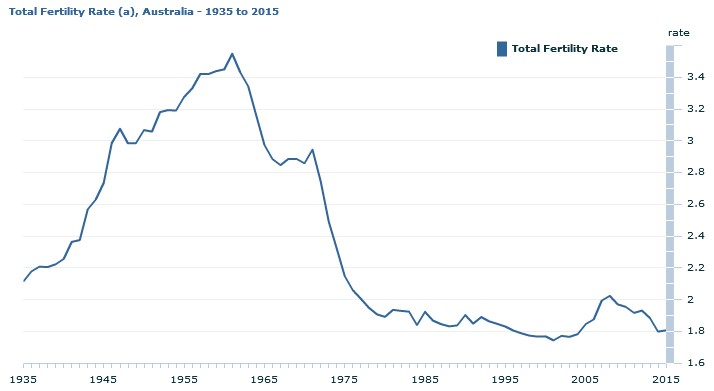
In 2015, the Northern Territory recorded the highest TFR (2.11 babies per woman) while Victoria recorded the lowest (1.68 babies per woman). The 2015 TFR for Victoria is the lowest since 2001, when a TFR of 1.63 was recorded. The large increase of births registered in NSW in 2015 accounts for the large increase in TFR:
